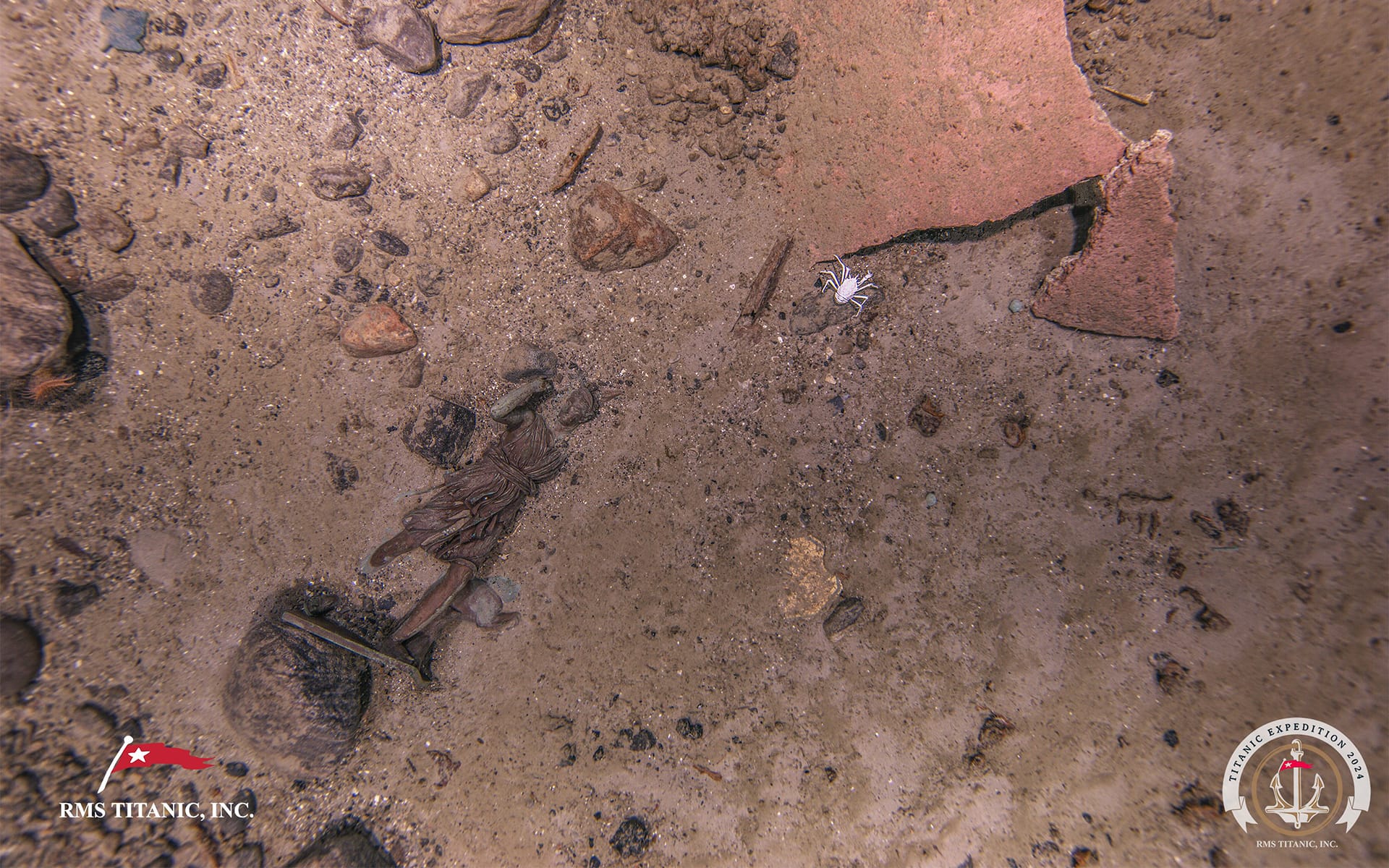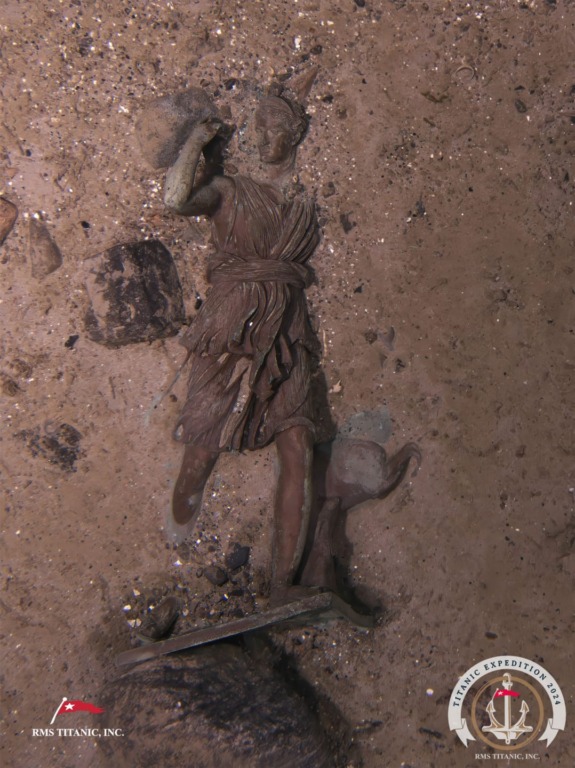Long-Lost Titanic Statue Diana of Versailles Rediscovered in Latest Expedition
Over 112 years after sinking in the North Atlantic, the luxury ocean liner continues to attract curiosity and exploration

A bronze statue aboard the Titanic that was initially feared lost to the sea has been rediscovered by a salvage crew on a recent expedition and pictured like never before. The work of art, which stands two feet tall and was predominately featured in the First Class Lounge, was identified as Diana of Versailles, according to the RMS Titanic, Inc.
The piece was previously photographed in a debris field during a 1986 expedition, but hasn’t been spotted since. On September 2, RMS Titanic, Inc released the highest quality photos ever taken of the statue as well as other areas of the debris site.
“Fine art decorated the halls and rooms throughout Titanic, but beauty is a delicate thing,” the company wrote, alongside a photo of the discovery. “Much of Titanic’s fine art was made of organic materials, breaking down into the earth after many decades submerged in the hostile environment of the North Atlantic. But some art was built to stand the test of time, like the Roman goddess Diana who sat atop the fireplace mantle in the First Class Lounge.”

The ship’s first class passengers totaled around 325 and hailed from some of the wealthiest and most influential American and European families. They brought with them on the doomed luxury ocean liner expensive cars and irreplaceable books and art, including the oil masterpiece La Circassienne au Bain by the French Neoclassical master Merry-Joseph Blondel.
The crew spent nine days at the 112-year-old wreckage site, capturing over two million images. It wasn’t until the final day of the expedition that they were able to locate the statue, using footage captured during previous dives as a guide.
The discovery—whilst exciting for the team—came amid mixed emotions as they observed obvious new forms of decay elsewhere on the ship’s structure. The footage captured a 15-foot-long section of the previously intact railing surrounding the bow’s deck now missing on the port side.
“We are saddened by this loss and the inevitable decay of the ship and the debris,” the team said on its website. “Over the course of the next few weeks and months, we will conduct a more thorough review of Titanic’s condition and her changes over time. Although Titanic’s collapse is inevitable, this evidence strengthens our mission to preserve and document what we can before it’s too late.”